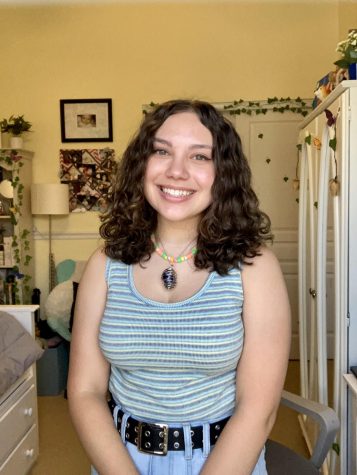Words by Women
Women have only written 20 percent of the approved books on SUSD’s high school supplemental book list
Juniors Christopher Lestler and Demi Sideris show the difference in approved books in the high school book list. “One way to bring to the forefront more female authors,” said Jonna Wallace, the district’s secondary ELA curriculum coach, “is for students to recommend novels written by females to their English teachers.” Only about 20 percent of the approved books are women authored.
January 13, 2022
“It was the best of times, it was the worst of times, it was the age of wisdom, it was the age of foolishness…”
“Call me Ishmael…
“It was a bright cold day in April, and the clocks were striking thirteen…”
You might recognize these quotes from classic literature you read in high school (for those of you who did the assigned reading), but they have another thing in common.
All were written by men.
With the school year comes the reading assignments English teachers pick out from an approved book list. Each grade level has a number of approved books that teachers choose from to assign to their students for a number of assignments, but only 20 percent of approved books are women authored.
“I try to look for books that are engaging for students but also have a deeper level of analysis that we can reach together,” said English teacher Ms. Varosky. According to her she ponders the questions of “Is it approachable? Is it interesting? Does it have depth to it?” to help her choose the books she assigns for the year.
The district formed a ELA High School Supplemental Reading List Committee “to facilitate book proposals and/or book reviews to the currently adopted curriculum.” The committee is composed of ELA teachers,
media specialists, administrators, district personnel, and parents; there is at least one representative
from each high school campus.
The complete reading list and procedure for book approval.
“Things we are looking for this year is diversifying the book list, like bringing in more women authored books and books that are also written by people of color and from different countries.” said Ms.Varosky, who is also a teacher on the committee. “Diversity is an important factor to look for this year.”
The lack of women authored books is mainly a problem at the high school level. Diane Murphy, a district curriculum coach, said about 50 percent of elementary school books are written by women.
The elementary level uses the same process to choose their approved books, meaning this problem has to do with what type of books are chosen for the high school level.
What can be done?
“One way to bring to the forefront more female authors is for students to recommend novels written by females to their English teachers,” said Jonna Wallace, a district curriculum coach.
Said Ms. Varosky: “Voicing it to their teacher is the best first step.”
“Questioning why they are reading those books and why aren’t these books approved,” Varosky added, “is the best to start so teachers can bring that to the committee.”
Bringing their ideas to their teachers is the only way students can gain a voice on the review committee. No students are on the committee, meaning there is no direct contact for them to voice their opinions.
“Part of a thing we can do to help is to have students be a part of the review committee and say we are fine being challenged,” said Ms. Varosky. The books chosen are not to be controversial or push anyone out of their comfort zone, she added, keeping it mainly books that stick to the stereotype of being written by men.
Diverse literature is a key concept to bring relatability to the students reading these books, creating connections for them with the characters .
“Looking at more modern literature. Looking for something that students immediately connect to because it’s relevant and it has things they can personally understand,” said Ms. Varosky, “Looking at more recently published literature is a great first step to start.”
A majority of the approved books are 20th century books, making it harder for students to relate to the characters, especially with the majority being male characters.
“I have always felt that we model what we see,” said DM principal Dr. Hirsch, “both the gender of the writer and that writer’s perspective.”



